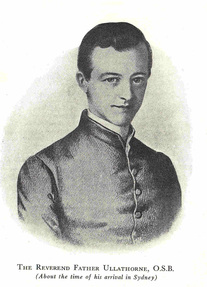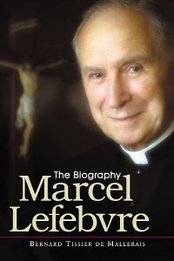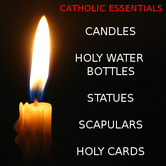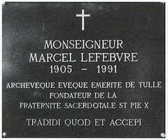
By Thomas Acres
The next scene of the story of the Catholic Church in Australia, opens with a young English Benedictine, William Bernard Ullathorne, who was appointed First Vicar - General of New South Wales in 1833. Born at Pocklington in Yorkshire on May 7, 1806 William Ullathorne was the oldest of ten children. At 13 he became a cabin boy on a freighter and spent five years in the rough seafaring life of the British merchant marines. In 1823, he abandoned the sea and entered Saint Gregory's College, Downside, to become a Benedictine. He received his first Holy Communion when 18 years of age, was confirmed at twenty-two and ordained priest at twenty-five.
When he arrived in Sydney - he was but twenty-seven years of age - he found his path considerably smoother than had been Father Therry's. The new Governor, Sir Richard Bourke, (1831-37) was sympathetic to the Catholic claims and adapted a religious policy on the grounds of equality. So much so that he passed a Church Act on July 29, 1836, which put all denominations on a equal footing. Chapels and rectories were built at government expense, this act gave Catholics in Australia broader recognition than their brethren enjoyed in England.
Father Ullathorne found other support upon his arrival in the form of Father John McEncroe who had been appointed chaplain the previous year arriving in Sydney on June 13, 1832. Father McEncroe's own apostolate to the convicts was second only to that of Father Therry. In 1839 he went to Norfolk Island, where the worst elements of the convicts were isolated and he laboured amongst them for two years.
Besides this support Father Ullathorne was soon to be joined by an old friend and teacher from Downside, John Bede Polding, O.S.B. On May 7, 1834, the Pope made "New Holland" a separate vicariate, and Dr. Polding was appointed First Vicar Apostolate.
Born at Liverpool on October 18, 1794, John Polding was educated by the Benedictines at St. Gregory's and joined the order in 1811. Early in life he manifested a curious interest in the Australian Mission and was jestingly called by his brethren the "Archbishop of Botany Bay." But for twenty-one years he lived the life of a Benedictine monk and was forty years of age when he arrived in Sydney in September 1835. Bishop Polding ruled the Catholic Church in Sydney for twenty-nine years and the magnitude of his achievements in the face of tremendous difficulties must rank him as one of the greatest missionaries of the nineteenth century. Writing nearly fifty years later, Ullathorne affirmed that "he was the most wonderful missioner I ever knew, especially among the convicts over whom he had an immense power. Among them he was a true St. Vincent de Paul." The historian of the Benedictines in Australia says that those who knew him best declare him "undoubtedly the greatest missionary of his age."1
Immediately upon his arrival in New South Wales he impressed his energy and personality in the whole community and in the short space of five years (1835-40) he not only transformed the spirit and status of the Catholic body, one third of the entire population, but wrought a change in the whole tone of society, to which the Government authorities paid glowing tribute.
Bishop Polding adjusted himself to the frontier conditions of the country and the cultural level of the people. he established "circuit riders" who made constant journeys into the Australian bush to minister to the Catholics. Though it is true that Father Therry was the pioneer priest of the saddle bishop Polding planned a systematic and periodical visitation of the missions. A superb horseman he outdid his younger clergy in endurance and went as far south as the Murray River and beyond.
He seemed to spend most of his life in the saddle, so that the Vicar-General complained that he neglected his correspondence. He always carried a blanket for sleeping under the stars, and occasionally "a pair of pistols for show." One day he was attacked by bushrangers on a lonely track. the outlaw pretended to be the constable of the district and stood at the horse's head, holding the bridle. but, relates the Bishop, "a severe blow on the head made him retreat. " When an accomplice rushed from the bush a few yards away, he "was treated in like manner."
The secret of his endurance he confided in a letter. "I live when I travel," he wrote, "entirely on bread and tea, now and then an egg, nothing more; no wine nor anything inebriating; and here is the secret, keep the body cool and you may endure great fatigue without feeling it."2
Most of the Emancipists and their children, had little, if any, education. The bulk of them were illiterate. The pioneer priests were therefore faced with the difficult problem of teaching them even the elements of religion. Bishop Polding, a teacher for many years, developed instruction through the eye as well as the ear. He used to the full every liturgical rite in the Ritual and Pontifical, and where none was provided, it is said, he invented one.3 On their rural rides, he and his priests held pontifical ceremonies, public penances, processions and cavalcades, bell-ringing and popular festivals, which made a profound impression, not only on the poor and ignorant, but on the more comfortable and educated, for the darkness of the Penal Laws still lingered in their minds.
Meanwhile Father Ullathorne had gone to Norfolk island to help the convicts transported to this island of the worst kind of depravities. he went to Norfolk Island on two different occasions, firstly in 1834 to prepare thirteen hardened convicts for death. Three were Catholic and four other put themselves under his care. Working from six in the morning to six at night for a week, he was instrumental in a remarkable change of disposition of the men. They manifested extraordinary fervour of repentance, went to the scaffold with light steps, having sewn large black crosses on their white caps and shirts and died cheerfully, repeating together the prayer, "Into thy hand I commend my spirit: Lord Jesus receive my soul."
Thus by the sacrifice and zeal of these "Apostles of Australia," the seeds of the Catholic Faith were planted in the sunburnt country, the land of rugged mountain ranges, of drought and flooding rains.
You may be interested in: Read also Latin Mass Australian Pioneer Priests
---------------------------------------------------------------------------------------------------------------------
1 Henry Norbett Birt, Benedictine Pioneers in Australia, Vol. 1 P. 277
2 Birt, op. cit. VII p185.
3 Australian Catholic Record (Jan. 1936) pp.15-16.




